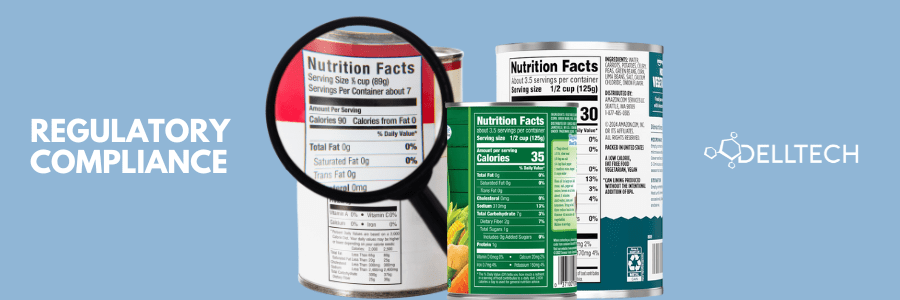By: Jacqui Jenskey, DIRECTOR OF REGULATORY AFFAIRS, email
Dell Tech is a leading consulting company in NHP Site License applications and renewals. Over the past 2 years we have seen a significant increase in government oversight regarding verification of finished product testing for NHP purity. The NHP Regulations require finished product specifications (FPS) to list out test methods and tolerance limits for purity measures such as Microbial and Chemical Contaminants.
[INSERT_ELEMENTOR id=5883]
What contaminants must be tested?
Microbial contaminants
Microbial contaminants testing includes the following:
- total viable aerobic plate count
- contaminating fungi (yeast and mold)
- salmonella SPP
- escherichia coli
- staphylococcus aureus
- pseudomonas aeruginosa
Chemical contaminants
Chemical contaminants are elemental impurities such as heavy metals, solvent residues and pesticide residues. Heavy Metals can be tested individually, or as total heavy metals with acceptable test methods noted in the NHPID, Pharmacopeial, or internationally accepted methods. Topical products have different requirements for heavy metal limits to ingestible products.
Additional contaminants testing
Additional contaminants testing will depend on the ingredients in the Natural Health Product. Some examples include aflatoxin, cyanobacterial toxins, animal hormones, antibiotic residues, radioactivity, oxidative stability, and marine oil contaminants testing.
When is contaminant testing completed for NHPs?
If these parameters are tested at the raw material stage, it is not required to repeat the testing again at the finished product stage. Companies must demonstrate that they have a solid rationale for not testing the finished product, and they must ensure GMPs are in place to prevent additional contaminants.
Post-testing requirements
For required testing, companies must ensure that EVERY raw material is being tested and that the total level of contaminants, when added together, does not exceed the NHP prescribed levels per daily dosage/application. This information MUST be made available to NNHPD during Site License renewals and facility audits.
For example, companies should keep on file a copy of:
- each raw material specification
- each Certificate of Analysis (CoA) from each raw material lot
- the contaminants calculations being done to determine the actual level in the product
- approval from the Quality assurance person to verify that the product meets the NHP requirements.
Alternatives
An alternative is to test each lot of finished packaged product and record those results in the FPS and on the CoA. While this can become an expensive endeavour, there are opportunities to incorporate skip lot testing or testing every “x” number of lots once you are able to show consistent results over several initial lots. This type of testing flexibility MUST be approved by NNHPD through a Site License amendment prior to implementing such a programme.
Companies should refer to the Quality of Natural Health Products Guide to ensure they are testing correctly and meeting the required parameters.
How Dell Tech Can Help
Reach out to us for assistance navigating NHP contaminant testing requirements. Our Regulatory Affairs Group also specializes in formula assessment, ingredient review and label compliance for Canadian NHP regulations.
Dell Tech has provided professional, confidential consulting services to the specialty chemical
industry in Canada, the USA, Europe, and Asia for the last 40 years.
[INSERT_ELEMENTOR id=5705]





